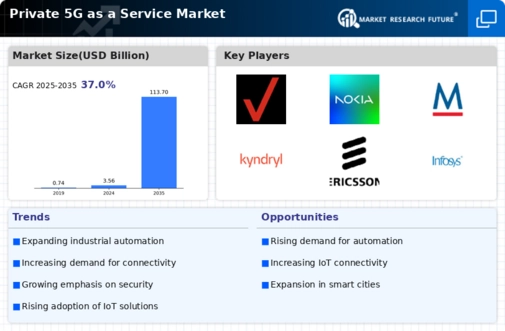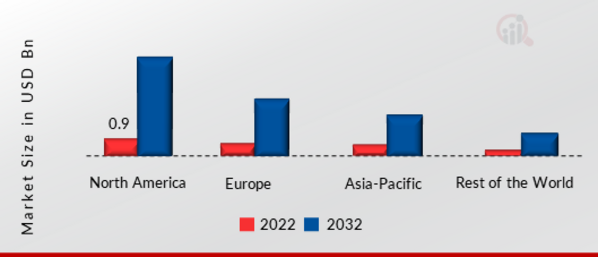Private 5G as a Service Market Summary
As per Market Research Future Analysis, the Global Private 5G as a Service Market was valued at USD 3.56 Billion in 2024 and is projected to grow significantly, reaching USD 82.98 Billion by 2034. This growth represents a compound annual growth rate (CAGR) of 37.0% from 2025 to 2034. The market is primarily driven by the increasing demand for ultra-reliable low-latency connections, particularly in Industrial IoT applications. Key sectors such as manufacturing, healthcare, and transportation are increasingly adopting private 5G networks for mission-critical applications requiring secure and dependable connectivity. Major players are innovating to meet client expectations, with solutions that offer high bandwidth and low latency, essential for supporting a growing number of IoT devices and emerging technologies like VR and AR.
Key Market Trends & Highlights
The market is witnessing several key trends driving its growth.
- Private 5G as a Service Market Size in 2024: USD 3.56 Billion
- Projected Market Size by 2034: USD 82.98 Billion
- CAGR from 2025 to 2034: 37.0%
- Largest Market Segment by Industry Vertical: Manufacturing
Market Size & Forecast
| 2024 Market Size | USD 3.56 Billion |
| 2025 Market Size | USD 4.88 Billion |
| 2034 Market Size | USD 82.98 Billion |
| CAGR (2025-2034) | 37.0% |
Major Players
Key players include Amazon Web Services, Inc., Verizon, AT&T Intellectual Property, Anterix Inc., Nokia, Mavenir, Kyndryl Inc., Cisco Systems, Inc., Ericsson, and Infosys Limited.








